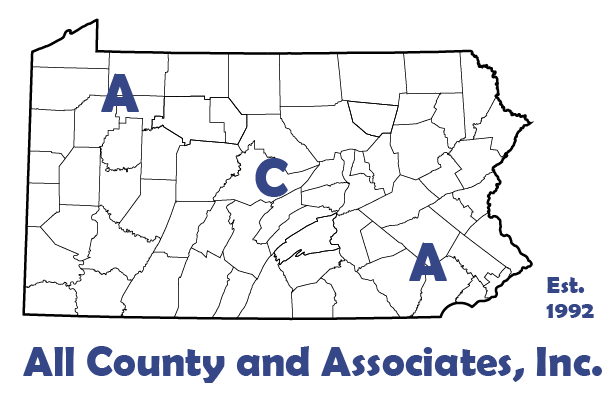
When extreme rainfall events happen, communities feel the pain through major flooding. These floods are the result of many issues. The first is that construction has not always been excluded from the floodplain, let alone the floodway. Next, rainfall has been increasing. Finally, infrastructure was not designed for the intensity or total volume of water.
Floodplain and Floodway

So, let’s start by looking at a waterway and the associated floodplain. The broadest coverage area, the floodplain. This is any land susceptible to waterway flooding, during a given rainfall event. FEMA typically references the 100-year event and floodplain. Within that floodplain is the floodway and the flood fringe. The floodway is the area needed to discharge the base flood. The height above the surface of the waterway during a base flood is the Base Flood Elevation.
Many watercourses lack studies, because of the extensive process to complete them. This means they have an estimated floodplain but no designated floodway. This means many buildings and other structures impact the floodplain or floodway. Today, regulations limit development to not increase in upstream flooding. In waterways, with a BFE, it serves as the known elevation to prohibit construction. For waterways lacking studies, communities must rely on case-by-case analysis. This can lead to developers getting Letter of Map Revisions or Letter of Map Amendment.
Increasing Rainfall
So, have you been wondering, “Is it me or have we been seeing bigger rainfall events?” No, it is not just you. Based on the 2019 National Climate Report, by NOAA, the majority of states saw record rainfall. NOAA recorded 35 states with above average or greater rainfall. While, they only saw one state with a below average season. In total, 5 states saw record rainfall. When you look at the northeast, it was the 11th wettest year on record. It was Pennsylvania’s 7th wettest year on record, a total of 117% of the average.
Infrastructure
As these rainfall totals increase, stormwater systems have lagged behind. As with other infrastructure, decades old stormwater controls need upgraded. Even worse, many calculations use out of date NOAA intensity and duration tables. In Pennsylvania, the rainfall tables were part of NOAA Atlas 14 Volume 2 and last updated in 2006.
Some community systems can only handle a 10-year rainfall event. More modern drainage networks use 25-year events. While most ponds and roadway culverts use 100-year events. As a side note, a 100-year event does not mean it occurs every 100-years. Instead, it means that you have a 1% chance of a rainfall event of that intensity in a given year.
The problem is, these increased rainfall totals are not based on a growth of the number of days it rains. Instead, the increase in total rain is because the intensity of the events is increasing. This means more events in the 100-year range, with some even reaching 500 to 1000-year ranges.
Conclusion
The biggest step needed are better studies. This in turn provides engineers and communities with better data. Yes, using higher rainfall intensities would mean bigger systems, and higher costs. They would dictate larger pipes, bigger basins and so on, but they would reduce flood damage. More flood damage means higher flood insurance, property damage and even loss of life.
These studies should also focus on establishing more floodways and base flood elevations. This waterway data determines who needs flood insurance and the risk of flood damage. That data also determines construction techniques to prevent the increase of flood elevations.
Firms like All County and Associates perform flood elevation certifications, letters of revision and/or letters of amendment. These can show that proposed construction is not in the floodplain or floodway. They also help homeowner’s lower insurance costs. Some also show when modifications to structures or property would reduce the likelihood of damage.
Who is ACA?
Started in 1992 and located in Chester County, PA ACA has grown to become a full-service civil engineering firm. Today, we merge professional services with practical knowledge for residential and commercial projects. No matter the scale, from installing a fence, to building a structure or developing land, you need permits. Because the approval process includes many permits and agencies, it can be a headache. Working with ACA’s full-service team saves you time, money, and headaches. Every step of the way, we are here to support you and educate you about the process. Here are some of the basic services we provide:
Construction Management | Civil Engineering | Environmental Permitting | Septic System Testing and Design | Land Surveying | Wetland Delineations and Mitigation
Please feel free to browse our website or if working on a project or need help, contact us at (610) 469-3830.


